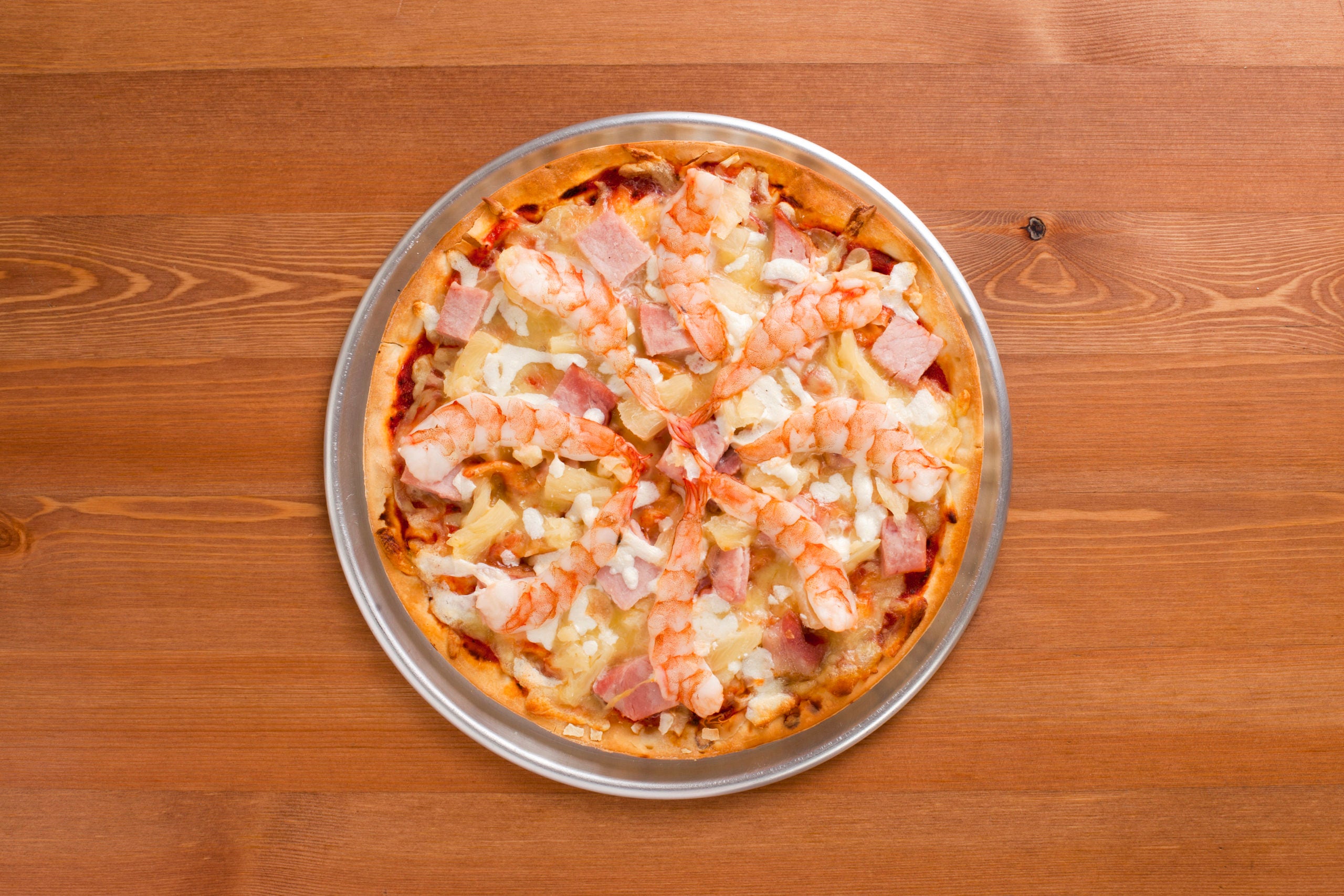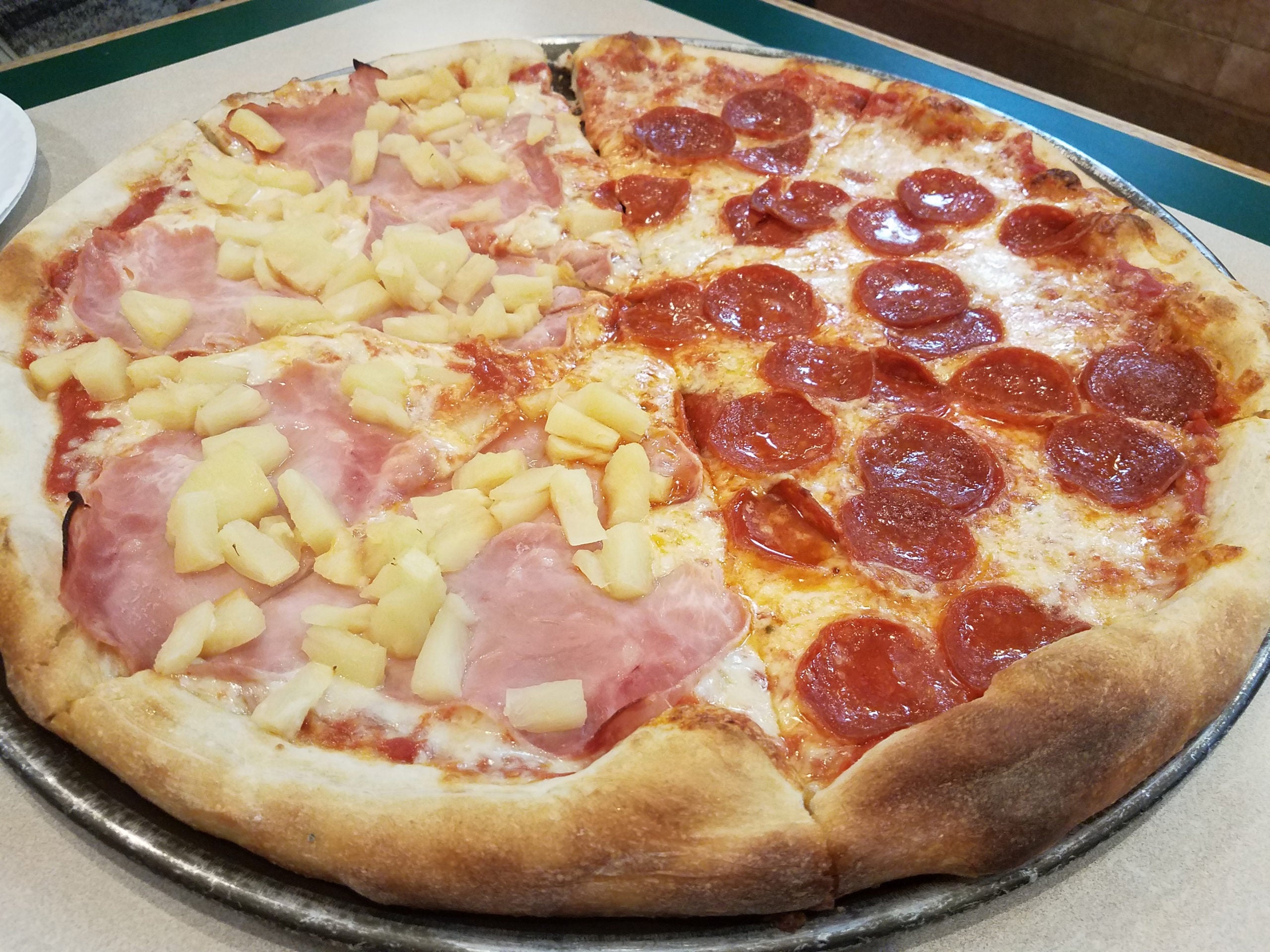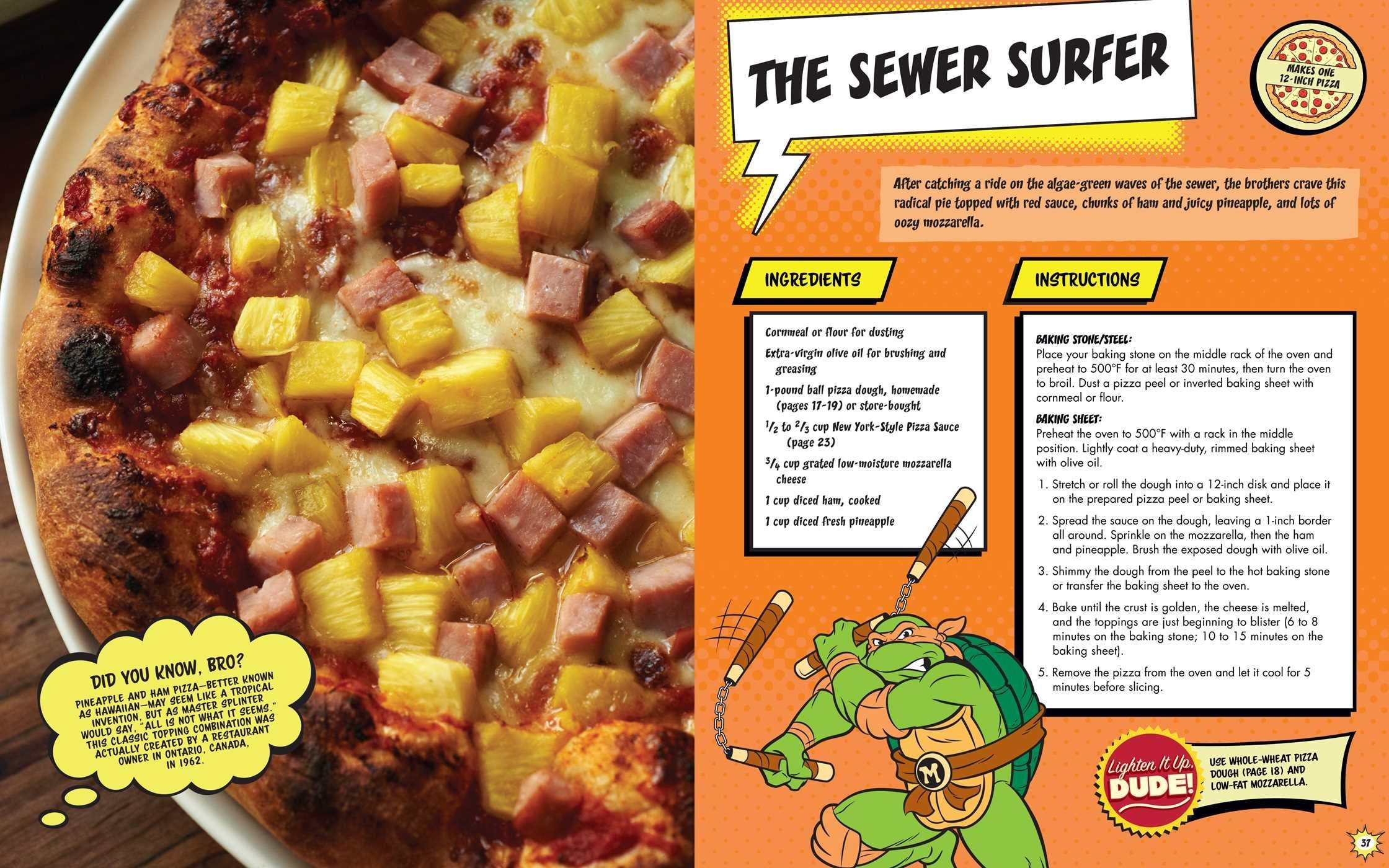The debate has raged on for more than half a century now — is pineapple an acceptable topping on pizza?
It’s an ongoing, multi-thread argument on Reddit, a persistently insulting meme and I even got some hate for it when I ordered it as part of my investigation into the Domino’s pizza tracker. But I’m here to say that the debate ends now.
While I myself am pro pineapple on pizza, I have developed a highly scientific, unbiased method to decide if pineapple on pizza is indeed valid. I have determined five relevant areas of expertise to judge pineapple as a topping and consulted three experts in each area to give a definitive answer.
Here’s what they had to say — and the final verdict…
Italian Chefs
Pizza is Italian. While some pseudo know-it-all smartasses sometimes like to claim otherwise by saying flatbreads started elsewhere, the modern pizza was invented by Raffaele Esposito in Naples in the late 1800s. Given that, it makes sense that the first stakeholders in this debate should be traditional Italian chefs.
I first speak to Amanda Vasquez (formerly Presti), who grew up with her Italian immigrant grandparents here in the U.S. Vasquez had previously weighed in on my piece about the food in Goodfellas, and she’s very much an Italian chef in the traditional sense. When it comes to pineapple on pizza, she says, “I’m not a big fan of the flavor pairings of tomato and pineapple. I don’t like sweet flavors in general, and it’s not very traditional.”
Giuseppe Fanelli, though, owner of Tredici North in Purchase, New York, and a winner of Chopped, says that he’s pro pineapple on pizza, as long as it’s done right. “I’m a very technical chef, meaning if you’re going to apply an ingredient, it has to fit and be an accompaniment. So if you’re using pineapple, it should be pre-cooked the same day if you’re cutting it in large cubes, or it should be thinly sliced,” Fanelli says. Also, he says ham isn’t the only acceptable pairing to pineapple on pizza, as it would also pair well with porchetta or shrimp.

Finally, renowned pizza chef (and James Beard Award winner) Chris Bianco says he doesn’t care for pineapple on pizza, feeling there’s too much acidity with both the tomato and pineapple. But he adds, “I don’t judge people. Marry who you want, love who you want and put whatever you like on your pizza. Personally, though, I’m not a fan.”
So while Bianco says not to hate pineapple pizza lovers, he personally doesn’t approve, putting the Italian chefs group definitively in the “no” column.
PIZZA EXPERT GROUPS — FOR: 0; AGAINST: 1
Food Historians
Next we turn to the origins of Hawaiian pizza itself, which is as much Hawaiian as it is Italian — that is to say, not at all. Sam Panopoulos was a Greek-born chef who moved to Canada and created Hawaiian pizza in 1962 in his Ontario restaurant. Panopoulos passed away in 2017, but lived to see what a controversy he had created. As he once explained to the BBC, “We just put it on, just for the fun of it, to see how it was going to taste. We were young in the business and we were doing a lot of experiments.”
So while Panopoulos wasn’t Italian and Hawaiian pizza certainly is more Canadian than Hawaiian, does that alone make it invalid? After all, while sausage and peppers are traditional Italian fare — and thus, an acceptable pizza topping — pepperoni was born in America by Italian-Americans, not in Italy proper, yet no one disputes its legitimacy as a pizza topping.

Given all this, I turned to food historians to “judge” the history of pineapple on pizza to determine if it’s somehow less “worthy” as a pizza topping. Julia Skinner, author of Afternoon Tea: A History, asks, “Is ‘Hawaiian’ pizza a legit kind of pizza in a truly traditional sense? Nope, probably not. Still, if you find a food that makes you happy, it doesn’t matter what anyone else thinks.” In other words, she says no, but in a nice way, much like Chris Bianco.
That said, the remaining two food historians I spoke to gave pineapple on pizza the historical seal of approval, with Repast Supper Club host Sam Bilton saying, “Historically speaking, it was commonplace to serve sweet dishes — like tarts or creams — alongside savory pies or stews, so I don’t think pineapple on pizza is that odd in that context.”
Then there’s professor Ken Albala, an author and editor of a wide variety of books about food, who says, “All cooking is a matter of evolution. To say, here is the correct dish and other forms aren’t legitimate, would be to consign the dish to a museum and have people stop eating it. Food, like language, evolves whether people want it to or not. That’s not to say there isn’t bad pizza, but when you start saying one form is legitimate or authentic, it’s essentially meaningless. So yes, I laud pineapple on a pizza. I put it on my own pizza now and then, especially fresh, grilled and cut into little cubes.”
PIZZA EXPERT GROUPS — FOR: 1; AGAINST: 1
Food Writers/Critics
With the scores tied, I next turned to the most unforgiving of groups: Food critics. “I, for one, do not care for pineapple on traditional pizza because the flavors are redundant,” says Jim Mumford, blogger at Jim Cooks Food Good. He elaborates, “Each part of a pizza plays a role; the crust is yeasty and gives texture, the cheese is fatty/salty, etc. When approached like this, a pizza and a peanut butter and jelly sandwich are very similar. So, in a PB&J, having two jellies is redundant, and on a pizza, having two flavors [the other being the tomato] that carry sweet/fruity notes is unnecessary.”
However, Greg Thilmont, a food critic who covers Las Vegas food and beyond, opines, “People get very factional and partisan about their pizzas. Obviously there’s the New York/Chicago roustabout that’s always going on, and then you can mix in Detroit and New Haven, too. Basically, people have their prejudices about pizza, and those are based on regionalism. Then there’s another level of pizza snobbery and Hawaiian pizza is looked down upon by many as either being child food or gauche. I was a real asshole for a lot of my life when it came to pizza, but in the last couple of years, I’ve had a couple of Hawaiian pizzas and you know what? It tastes good! Pineapple is delicious, and it’s used in meat all the time. That’s what makes al pastor so good — the pineapple, especially if it’s good pineapple, like Maui Gold pineapples. Canadian bacon can also be of high quality too.”
Given all that, Thilmont says if the ingredients are high quality, Hawaiian pizza “is a fine pizza.”
But when reaching out to food writer Gary Allen of On the Table, he decisively says, “I’m not a big fan of sweet ingredients on savory dishes like pizza,” putting the majority of the food writers firmly against pineapple on pizza.
PIZZA EXPERT GROUPS — FOR: 1; AGAINST: 2
Flavor Chemists
If you’re unfamiliar with what a flavor chemist is, Wikipedia describes them as the following: “A flavorist, also known as flavor chemist, is someone who uses chemistry to engineer artificial and natural flavors.” So these guys determine taste on a microscopic level, and perhaps it’s because of this that the flavorists I interviewed were the only stakeholders with a consensus, with them all giving pineapple on pizza a scientific thumbs up.
“When we’re talking about food pairings, we’re talking about things that both reinforce flavors in each other, as well as flavors that provide contrast,” explains flavor chemist Terry Miesle of FONA International. “For example, when you put garlic on a steak, you’ve got a lot of sulfur compounds and sugars, and those reinforce the steak, but you can also taste the contrast, otherwise you wouldn’t be able to tell it’s there. With pineapple on pizza, it’s doing both of these things — it’s reinforcing and contrasting — but with different components of the pizza.”
So when it comes to pineapple and tomato sauce, Miesle says that those two are contrasting and reinforcing each other in different ways. While both are fruits that have acids, tomato sauce has lactic acid and a little bit of citric acid, while pineapple has a lot of citric acid, no lactic acid and some ascorbic acid (which is vitamin C). So while these are all acids, they’re different acids — and different tastes — so they contrast each other.
As for the pineapple and cheese, these reinforce each other in ways that aren’t obvious. Miesle explains that cheese has a fruity component to it, which is why it changes as it ages and why you can taste the difference between cheeses that age for six months, versus a year, versus 10 years. That’s also why they say cheese “ripens” just like a fruit does. Also, cheese, tomato, ham and pineapple all caramelize when heated, reinforcing that flavor throughout.
Miesle helpfully drew up a little graph to illustrate what he’s saying:

While it’s a little technical, basically, the chemicals on the left are what we as humans are evolutionarily capable of tasting and the Xs stand for intensity. As you can see, the four major ingredients that are on top of the bread all balance each other out, providing both contrast and reinforcement.
Is there, however, such a thing as too much contrast? Absolutely, and Miesle explains that that’s why some tastes come off as offensive. “Just imagine lemon on pizza,” he offers as an example. He goes on to explain that the reason why people may not like pineapple on pizza is because of personal preference, as it may provide too much contrast with the other flavors they associate with pizza.
As for reinforcement, there is such a thing as too much of that too, and Miesle says if you’ve got too much reinforcement, everything tastes the same and dull. Pineapple and ham, however, tends to balance things out, making it a sound flavor topping for pizza (go science!).
In addition to Miesle, I spoke with Gary Reineccius, professor emeritus at the University of Minnesota’s Food Science and Nutrition Department, who says, “I don’t see any scientific issues,” with pineapple on pizza, going on to explain that another thing that makes it an acceptable topping is that it holds up under heat, whereas something like avocado — also a fruit — would not.
I got the same answer from flavor scientist Susie Bautista, who also added that the texture of pineapple is another component that makes it a good topping, as it has a slight crunch to it, much like pepper and onions.
PIZZA EXPERT GROUPS — FOR: 2; AGAINST: 2
Ninja Turtles
With the opinions all tied up at two groups for pineapple on pizza and two against, I turned to an indisputable tiebreaker — those whose insight into pizza is just as deep as the PhDs, scientists and historians who came before them: voice actors who have portrayed Teenage Mutant Ninja Turtles.
To my great surprise, Townsend Coleman, who portrayed Michelangelo on the original 1987 cartoon series, says (in his trademark surfer dude Mikey voice), “There are so many things that go on a pizza and pineapple is definitely not one of them. Anchovies and hot fudge, why don’t you try starting there, dude!” When he switches back to his regular voice, Coleman reiterates by saying, “Pineapple doesn’t belong on pizza — it’s sweet. You can call that something else, but it’s not pizza.”

However, Robbie Rist, who portrayed an anchovy-hating Michelangelo in the original 1990 film, says that he’s “all for it” when it comes to pineapple on your pizza.
Which brings me to Rob Paulsen, who portrayed Raphael in the original cartoon, then Donatello in the 2012 Nickelodeon series (he’s also the author of a new memoir, Voice Lessons: How a Couple of Ninja Turtles, Pinky and an Animaniac Saved My Life). With everything left up to his tie-breaking vote, Paulsen tells me the following: “Raphael says, ‘Pineapple on pizza is a sin against Italy — and nature! It should only be considered as a smoothie additive and an underwater home for square, pants-wearing sponges.’”
PIZZA EXPERT GROUPS — FOR: 2; AGAINST: 3
So, there you have it folks: To my great disappointment, pineapple on pizza is officially cancelled. It was a close call, but by my very scientific and democratic analysis, the “no’s” have it by just a hair.
RIP pineapple on pizza, you had a good run.

